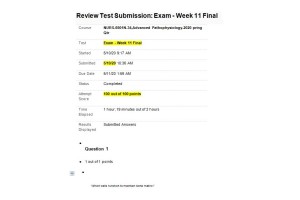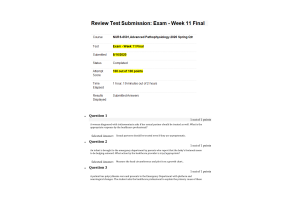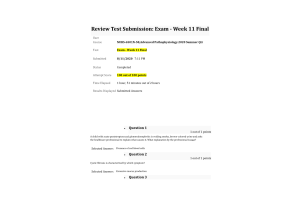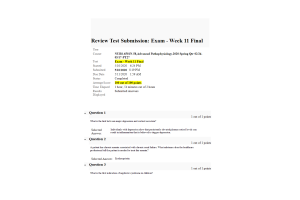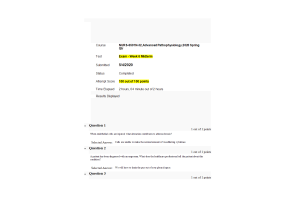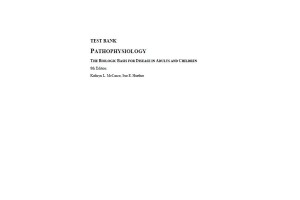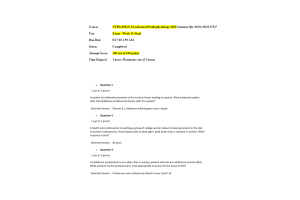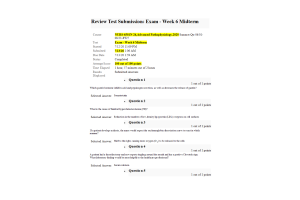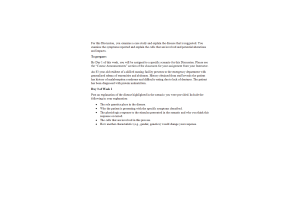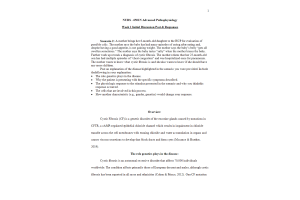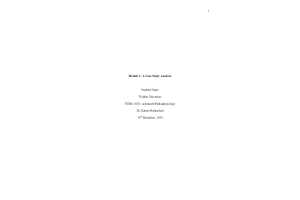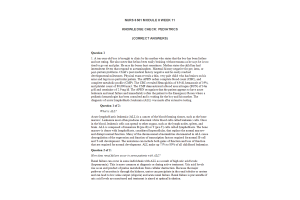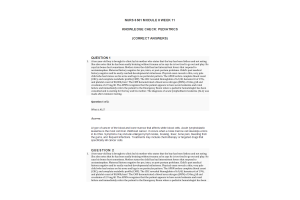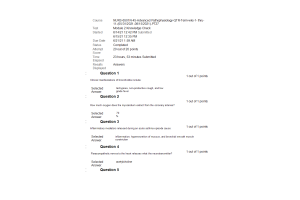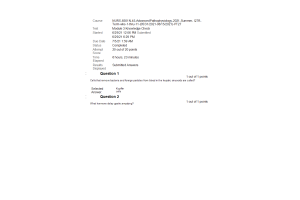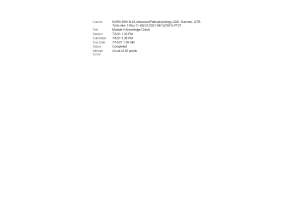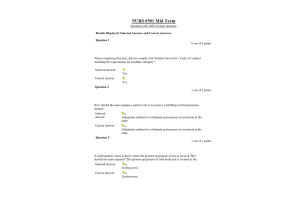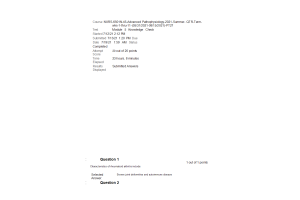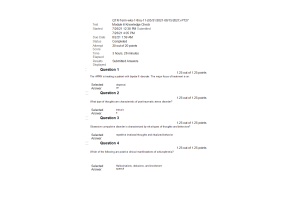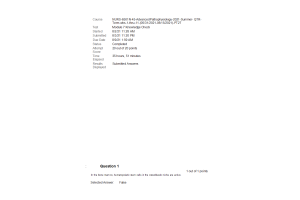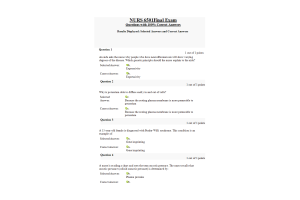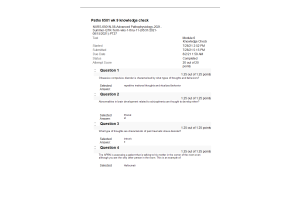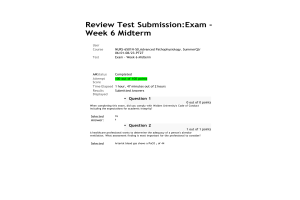NURS 6501 Week 11 Knowledge Check
- $20.00
- Question: A child with MYCN oncogene is at risk for developing which type of cancer?
- Question: Infants that have seizures typically have what types of symptoms due to the normal development of the nervous system?
- Question: Cerebral palsy involves what type of defects?
- Question: An adolescent that uses anabolic steroids to increase muscle mass is at risk for developing which type of cancer?
- Question: Red, round, and scaling patches with a clear center that occur mostly on the face, trunk, and limbs in an asymmetrical distribution describes which of the following conditions?
- Question: Sickle cell anemia is usually detected at birth because fetal hemoglobin is affected by the genetic mutation.
- Question: Rotavirus is the leading cause of what symptom in infants and young children?
- Question: A tetrology of flow will cause what type of blood shunting?
- Question: Respiratory distress syndrome in the newborn is caused by the deficiency of what substance?
- Question: Pruritic linear lesions that itch more at night that may have more vesicles and papules describes which of the following conditions?
- Question: The most common cause of chronic hepatitis in children is:
- Question: What is the function of Protein S?
- Question: A child with Fanconi anemia is at risk for developing which type of cancer?
- Question: A ventricular septal defect will cause what type of blood shunting?
- Question: Von Willebrand disease is a genetic condition that causes: (thrombotic, hemorrhagic) condition.
- Question: Children with Down's Syndrome has an increased risk of developing which type of cancer?
- Question: During the first five years of life, the respiratory system continues to develop and the number of what structure increases?
- Question: Before the bone marrow is functional in a fetus, where does the production of erythrocytes primarily take place?
- Question: Redness and tenderness of skin that becomes widespread, followed by painful blisters, bullae, and sloughing of skin describes which of the following conditions?
- Question: What medication should a child with G6PD deficiency avoid because it can trigger a hemorrhage?

